Mung Bean Sprouts at Home: Ever dreamt of having a constant supply of fresh, crunchy sprouts right at your fingertips? Imagine adding a burst of freshness to your salads, sandwiches, and stir-fries, all while knowing exactly where your food comes from. Well, stop dreaming and start sprouting! This DIY guide will unlock the secrets to growing your own delicious mung bean sprouts, a skill that’s both incredibly rewarding and surprisingly easy.
Sprouting beans is an ancient practice, dating back thousands of years in various cultures, particularly in Asian cuisine. They have been a staple in many diets, offering a readily available source of nutrients, especially during times when fresh produce was scarce. Think of it as a historical superfood, now ready to be revived in your very own kitchen!
But why should *you* bother with growing mung bean sprouts at home? In today’s world, we’re increasingly conscious of what we eat. Store-bought sprouts can sometimes be expensive and, let’s be honest, a little questionable in terms of freshness. By taking matters into your own hands, you gain complete control over the process, ensuring you’re consuming the freshest, most nutritious sprouts possible. Plus, it’s a fantastic way to reduce your grocery bill and minimize food waste. So, let’s dive in and discover how simple it is to cultivate these little nutritional powerhouses!
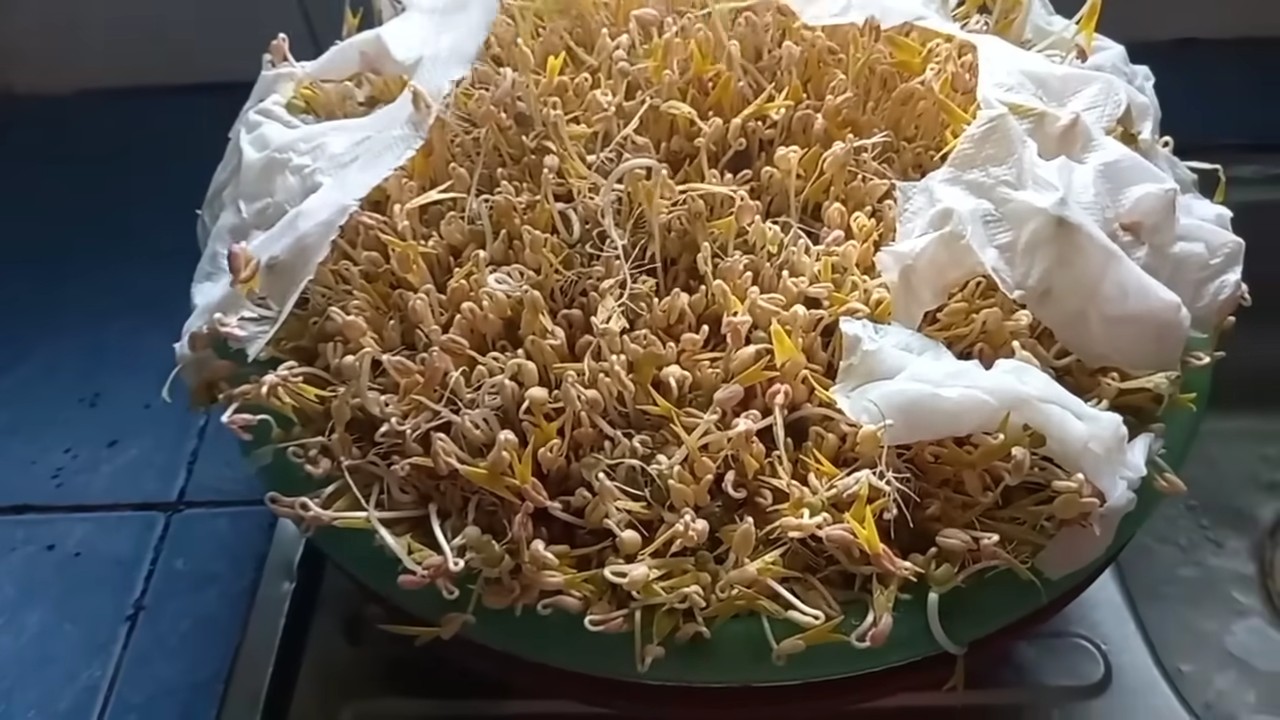
Growing Mung Bean Sprouts at Home: A Simple DIY Guide
Hey there, fellow sprout enthusiasts! I’m so excited to share my tried-and-true method for growing delicious, crunchy mung bean sprouts right in your own kitchen. Forget buying them at the store – this is cheaper, fresher, and surprisingly easy. Trust me, once you taste homemade sprouts, you’ll never go back!
What You’ll Need
Before we dive in, let’s gather our supplies. This is a pretty low-tech operation, which is part of what makes it so great.
* **Mung Beans:** Obviously! You can find these at most grocery stores, Asian markets, or online. Make sure they’re whole, un-split beans.
* **A Wide-Mouthed Jar:** A quart-sized mason jar works perfectly. You could also use a clean plastic container, but I prefer glass.
* **Sprouting Lid or Cheesecloth:** You need something to cover the jar that allows water to drain but keeps the beans inside. Sprouting lids are specifically designed for this, but a few layers of cheesecloth secured with a rubber band will work just as well.
* **A Bowl or Tray:** To rest the jar in at an angle for drainage.
* **Water:** Clean, filtered water is best.
* **A Dark Place:** A cupboard, pantry, or even a covered box will do the trick. Darkness is key for optimal sprout growth.
The Sprouting Process: Step-by-Step
Okay, let’s get sprouting! This process takes about 3-5 days, so patience is key. But the reward is well worth the wait.
1. **Rinsing and Soaking the Beans:** This is the crucial first step. Place about 1/4 to 1/2 cup of mung beans in your jar. I usually start with 1/4 cup, as they expand quite a bit. Rinse the beans thoroughly under cool water, removing any debris or broken beans. Then, fill the jar with plenty of cool water – about three times the volume of the beans. Cover the jar with your sprouting lid or cheesecloth and secure it. Let the beans soak for 8-12 hours, or even overnight. This rehydrates them and kicks off the germination process. I usually soak them before I go to bed, so they’re ready to go in the morning.
2. **Draining and Rinsing (Day 1):** After the soaking period, drain the water completely from the jar. Rinse the beans thoroughly with cool water again, making sure to get rid of any lingering debris. Drain the water completely. This is super important – you don’t want the beans sitting in stagnant water, as that can lead to mold.
3. **Setting Up for Sprouting:** Now, place the jar upside down in your bowl or tray at an angle. This allows any excess water to drain out and provides good air circulation. The angle is important! You want the beans to be able to breathe. Place the jar in your dark location.
4. **Rinsing and Draining (Days 2-4):** This is the most important part of the daily routine. Rinse and drain the beans thoroughly with cool water 2-3 times a day. I usually do it in the morning, afternoon, and before bed. This keeps the beans moist and prevents them from drying out, which is essential for sprouting. Remember to drain the water completely after each rinse. Return the jar to its angled position in the dark place after each rinse.
5. **Monitoring Growth:** You should start to see tiny sprouts emerging from the beans within a day or two. As they grow, they’ll fill up the jar. Keep rinsing and draining regularly.
6. **Harvesting (Day 3-5):** Your sprouts are ready to harvest when they’re about 2-3 inches long. The exact length is up to you – some people prefer them shorter, some longer. I usually harvest mine when they’re around 2 inches.
7. **Final Rinse and “Greening”:** Before harvesting, give the sprouts one final, thorough rinse. This is also the time to “green” them, if you like. Exposing the sprouts to indirect sunlight for a few hours will cause them to turn a light green color, which some people find more appealing. However, be careful not to expose them to direct sunlight, as this can overheat them and damage them. I usually just leave them on my kitchen counter for a few hours.
8. **Harvesting and Storing:** Once you’re happy with the sprouts, remove them from the jar. Give them one last rinse and drain them well. To store them, place them in a clean container lined with a paper towel. This will help absorb any excess moisture and keep them fresh. Store the sprouts in the refrigerator for up to a week.
Troubleshooting
Sometimes, things don’t go exactly as planned. Here are a few common issues and how to address them:
* **Mold:** If you see any signs of mold (fuzzy white or gray patches), discard the entire batch immediately. Mold is a sign of contamination and can be harmful. To prevent mold, make sure you’re rinsing and draining the beans thoroughly and regularly. Good air circulation is also key.
* **Unpleasant Smell:** A sour or unpleasant smell is another sign of contamination. Discard the batch and start over.
* **Slow Growth:** If your sprouts are growing slowly, it could be due to a few factors. Make sure the beans are getting enough moisture and that the temperature is not too cold. Also, ensure they are in a dark enough environment.
* **Rotting Beans:** If some of the beans are rotting, it could be due to poor drainage or overcrowding. Make sure you’re draining the water completely after each rinse and that you’re not using too many beans in the jar.
Tips for Success
Here are a few extra tips to help you grow the best mung bean sprouts possible:
* **Use Fresh Beans:** Older beans may not sprout as well.
* **Maintain Hygiene:** Wash your hands and all equipment thoroughly before starting.
* **Don’t Overcrowd:** Using too many beans in the jar can lead to overcrowding and poor air circulation.
* **Experiment:** Try different soaking times and rinsing frequencies to see what works best for you.
* Be Patient: Sprouting takes time, so don’t get discouraged if your first batch isn’t perfect.
Using Your Homegrown Sprouts
Now for the fun part – eating your sprouts! Mung bean sprouts are incredibly versatile and can be used in a variety of dishes. Here are a few of my favorite ways to enjoy them:
* **Salads:** Add them to salads for a crunchy and refreshing boost.
* **Stir-fries:** They’re a classic addition to stir-fries. Add them towards the end of cooking to retain their crunch.
* **Spring Rolls:** Use them as a filling in fresh spring rolls.
* **Sandwiches and Wraps:** Add them to sandwiches and wraps for extra texture and nutrients.
* **Soups:** Sprinkle them on top of soups for a garnish.
* **On Their Own:** I sometimes just eat them raw as a snack!
Why Grow Your Own Sprouts?
Besides being incredibly easy and cost-effective, growing your own mung bean sprouts offers several benefits:
* **Freshness:** Homemade sprouts are much fresher than store-bought ones.
* **Nutritional Value:** Sprouts are packed with vitamins, minerals, and enzymes.
* **Control:** You have complete control over the growing process, ensuring that your sprouts are free from pesticides and other harmful chemicals.
* **Sustainability:** Growing your own sprouts reduces your reliance on commercially produced food, which can have a significant environmental impact.
* It’s Fun!: Honestly, it’s just really satisfying to watch those little sprouts grow!
So there you have it! My complete guide to growing mung bean sprouts at home. I hope you give it a try – you might be surprised at how easy and rewarding it is. Happy sprouting!
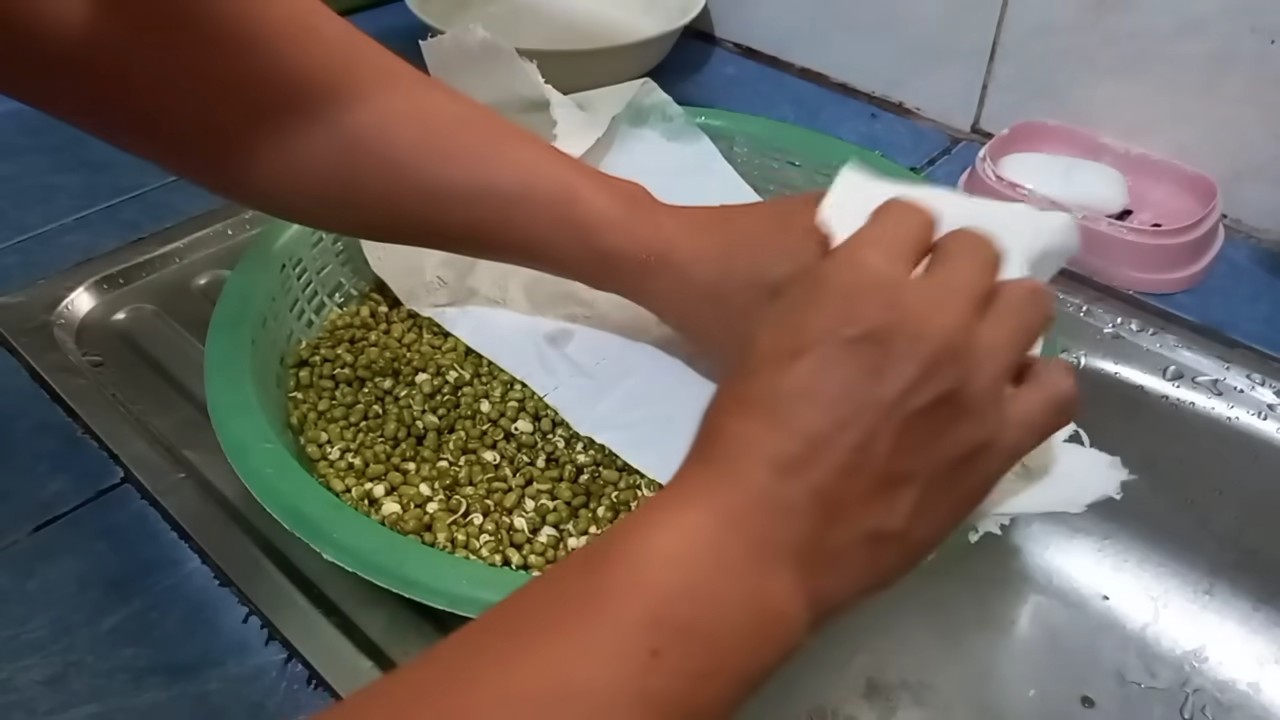
Conclusion
So, there you have it! Growing your own mung bean sprouts at home is not just a fun project; it’s a gateway to fresher, more nutritious, and significantly cheaper sprouts than you’ll find at the grocery store. Forget those limp, slightly slimy sprouts that have been sitting on the shelf for days. With this simple DIY trick, you can enjoy crisp, vibrant mung bean sprouts bursting with flavor and packed with vitamins and minerals, all grown in your own kitchen.
Why is this a must-try? Because it empowers you to control the quality and freshness of your food. You know exactly what’s going into your sprouts – just mung beans and water. No preservatives, no additives, just pure, wholesome goodness. Plus, the satisfaction of watching those tiny beans transform into crunchy sprouts is incredibly rewarding. It’s a mini-science experiment that ends with a delicious and healthy reward.
But the fun doesn’t stop there! Feel free to experiment with variations. Try using different types of beans, like adzuki beans or lentils, to create a diverse array of sprouts. Add a touch of spice to your soaking water for a subtle flavor infusion. Consider using a sprouting jar with a mesh lid for even better drainage and air circulation. You can even adjust the sprouting time to achieve your preferred sprout length and texture. Some people prefer shorter, crunchier sprouts, while others like them longer and more tender. The possibilities are endless!
This DIY mung bean sprouts method is also incredibly sustainable. You’re reducing your reliance on commercially produced sprouts, which often come with significant environmental costs associated with transportation and packaging. By growing your own, you’re contributing to a more eco-friendly lifestyle.
Don’t be intimidated by the process. It’s truly easier than you might think. With just a few simple steps and minimal effort, you can have a constant supply of fresh, delicious mung bean sprouts at your fingertips. They’re perfect for adding to salads, stir-fries, sandwiches, soups, and so much more. They add a delightful crunch and a boost of nutrition to any meal.
We wholeheartedly encourage you to give this DIY trick a try. You’ll be amazed at how easy and rewarding it is to grow your own mung bean sprouts at home. And once you’ve mastered the technique, we’d love to hear about your experience! Share your tips, variations, and photos with us in the comments below. Let’s build a community of sprout enthusiasts and spread the word about this fantastic way to enjoy fresh, healthy food. So, grab some mung beans, get sprouting, and enjoy the delicious results! This method is the best way to get fresh **mung bean sprouts** whenever you want them.
Frequently Asked Questions (FAQ)
What kind of mung beans should I use?
It’s crucial to use whole, dried mung beans specifically intended for sprouting. Avoid using split mung beans or those that have been processed in any way, as they won’t germinate properly. Look for mung beans labeled as “sprouting beans” or “whole mung beans” at your local grocery store, health food store, or online. Organic mung beans are a great choice if you prefer to avoid pesticides and herbicides. Ensure the beans are relatively fresh; older beans may have a lower germination rate.
How long does it take for mung beans to sprout?
The sprouting time typically ranges from 3 to 5 days, depending on the temperature and humidity of your environment. Warmer temperatures will generally speed up the sprouting process, while cooler temperatures may slow it down. It’s important to keep the sprouts consistently moist but not waterlogged during this time. Check them regularly and adjust the rinsing schedule as needed. You’ll know they’re ready when the sprouts are about 1-2 inches long and have a crisp, crunchy texture.
What if my mung beans don’t sprout?
Several factors can contribute to mung beans not sprouting. First, ensure that your beans are fresh and specifically intended for sprouting. Old or damaged beans may have a low germination rate. Second, make sure you’re rinsing the beans regularly and thoroughly. They need consistent moisture to sprout, but they also need proper drainage to prevent mold growth. Third, check the temperature of your environment. Extremely cold or hot temperatures can inhibit sprouting. Finally, ensure that the beans are not exposed to direct sunlight, as this can also hinder the process. If you’ve tried all of these tips and your beans still aren’t sprouting, try starting with a fresh batch of beans.
How do I prevent mold growth on my mung bean sprouts?
Preventing mold growth is essential for ensuring the safety and quality of your mung bean sprouts. The key is to maintain proper hygiene and ventilation. Always use clean equipment, including your sprouting container and rinsing water. Rinse the sprouts thoroughly at least twice a day to remove any accumulated bacteria or debris. Ensure that the container has adequate drainage to prevent water from pooling at the bottom. Avoid overcrowding the container with too many beans, as this can restrict airflow. If you notice any signs of mold, such as a fuzzy or slimy texture, discard the entire batch immediately.
How do I store mung bean sprouts?
Once your mung bean sprouts have reached your desired length, it’s important to store them properly to maintain their freshness and prevent spoilage. Rinse the sprouts thoroughly and drain them well. Place them in a clean, airtight container lined with a paper towel to absorb excess moisture. Store the container in the refrigerator for up to a week. Check the sprouts regularly and discard any that show signs of spoilage, such as a slimy texture or an unpleasant odor.
Can I eat the green hulls of the mung beans?
Yes, the green hulls of the mung beans are perfectly safe to eat. They are a natural part of the bean and contain fiber and nutrients. However, some people prefer to remove them for aesthetic reasons or because they find the texture slightly less appealing. You can easily remove the hulls by gently rubbing the sprouts under running water. The hulls will float to the surface and can be easily discarded.
Are mung bean sprouts safe to eat raw?
While mung bean sprouts are generally considered safe to eat raw, there is a small risk of foodborne illness associated with consuming raw sprouts. This is because sprouts are grown in warm, moist conditions, which can be conducive to bacterial growth. To minimize this risk, it’s important to purchase fresh, high-quality sprouts from a reputable source or to grow your own sprouts using proper hygiene practices. Thoroughly rinsing the sprouts before consumption can also help to remove any potential contaminants. If you are pregnant, elderly, or have a weakened immune system, it’s generally recommended to cook sprouts before eating them to eliminate any risk of foodborne illness.
What are the nutritional benefits of mung bean sprouts?
Mung bean sprouts are a nutritional powerhouse, packed with vitamins, minerals, and antioxidants. They are a good source of protein, fiber, and folate, as well as vitamins C and K. They are also low in calories and fat, making them a healthy addition to any diet. The sprouting process increases the bioavailability of certain nutrients, making them easier for the body to absorb. Mung bean sprouts have been linked to various health benefits, including improved digestion, reduced inflammation, and enhanced immune function.
Can I use a different container for sprouting?
Yes, you can use a variety of containers for sprouting mung beans, as long as they meet certain criteria. The container should be clean, food-grade, and have adequate drainage to prevent water from pooling at the bottom. A wide-mouth jar with a mesh lid is a popular choice, as it allows for good air circulation and easy rinsing. You can also use a sprouting tray or a colander lined with cheesecloth. Avoid using containers made of materials that could leach harmful chemicals into the sprouts.
How often should I rinse the mung bean sprouts?
You should rinse the mung bean sprouts at least twice a day, or even more frequently in warmer climates. The goal is to keep the sprouts consistently moist but not waterlogged. Rinse them thoroughly under cool, running water, ensuring that all surfaces are exposed to the water. This will help to remove any accumulated bacteria or debris and prevent mold growth. After rinsing, drain the sprouts well to prevent water from pooling at the bottom of the container.

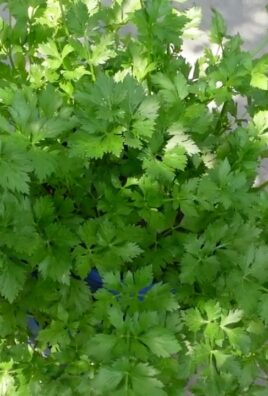
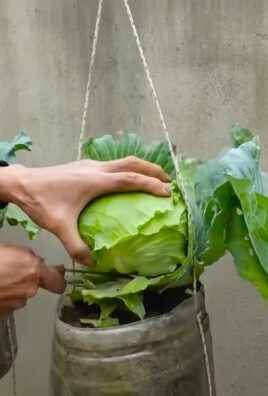
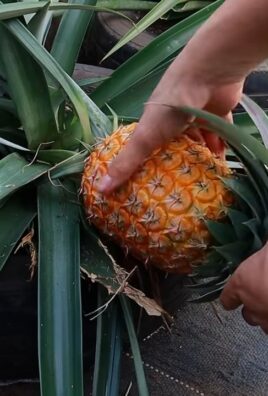
Leave a Comment